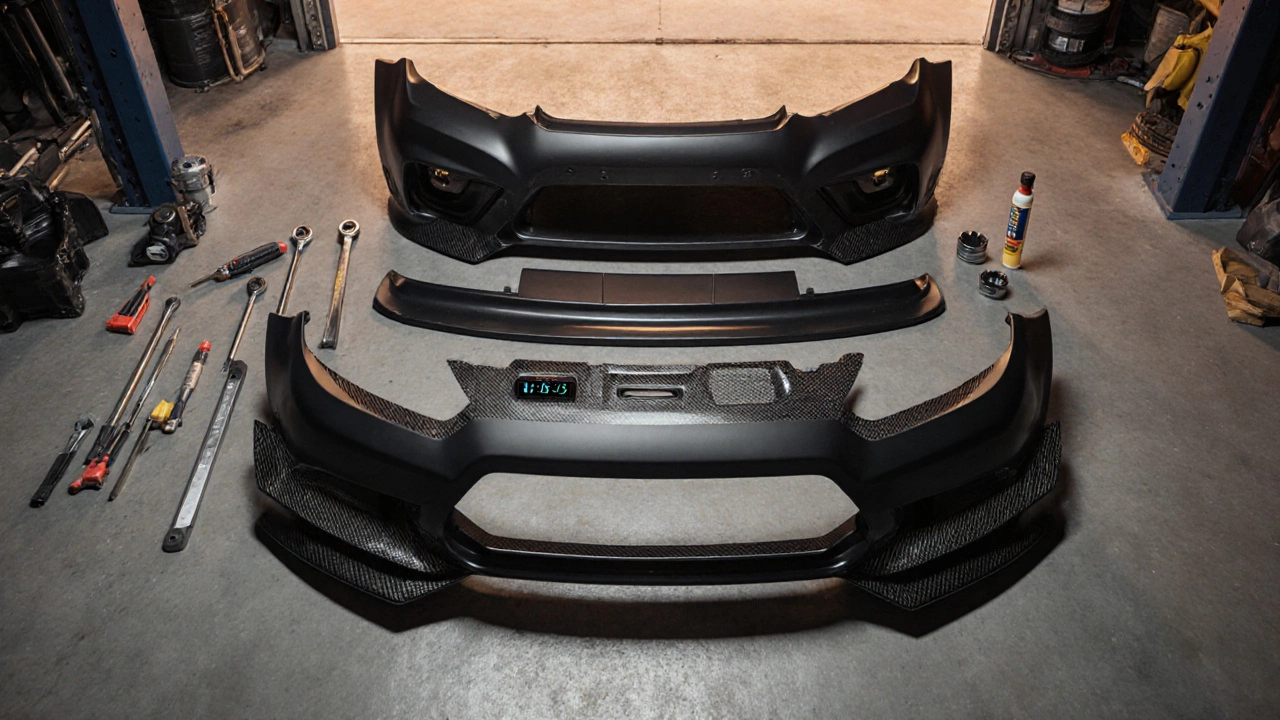When planning a body kit installation time, the period needed to fit a full set of exterior panels, bumpers and accessories onto a vehicle, most owners wonder if it will take a weekend or a full week. Knowing the factors that stretch or shrink that timeline helps you budget both time and money. Below we break down the main pieces that shape the schedule, so you won’t be caught off‑guard when the work starts.
The body kit, a collection of exterior parts designed to change a car’s look and performance itself is the core driver of time. A simple bolt‑on lip spoiler may slip on in under an hour, while a full kit with front bumper, side skirts, rear diffuser and custom fitment can require stripping panels, trimming, and welding. Each additional component adds steps: removal of stock parts, fit‑checking, drilling or cutting, and final finish work. That cascade of tasks directly influences body kit installation time.
The installation process, the step‑by‑step tasks a technician follows to mount and finish the kit is shaped by three practical elements. First, the vehicle’s make and model matters; a tightly packaged hatchback may need more panel removal than a boxier sedan. Second, the tools at hand – a professional workshop with a lift, proper alignment equipment and spot welders will move faster than a DIY garage with just a jack. Third, the installer’s experience level: seasoned pros cut down on trial‑and‑error, while beginners often double‑check measurements and take extra time to ensure a clean fit.
Another often‑overlooked piece is aerodynamics, how air flows over the car and impacts downforce and drag. When a kit aims to boost downforce, components may need precise angles, roof‑mounted spoilers, or diffusers that require custom mounting brackets. Aligning those parts for optimal airflow adds a tuning stage, which can add a few hours to the overall schedule. Ignoring aerodynamic alignment might save time, but it can compromise performance – a trade‑off worth considering before you start.
Don’t forget the vehicle suspension, the system of springs, shocks and linkages that supports the car’s weight and handles road forces. A lowered stance often pairs with a body kit, meaning you may need to adjust ride height, install coilovers, or re‑align wheels after the kit is on. Those suspension tweaks are usually done after the main body work, but they are part of the total installation timeline. Skipping them can lead to poor handling or uneven panel gaps.
Real‑world numbers help put these ideas into perspective. A modest lip‑only kit on a common compact can be completed in 2–3 hours by a competent DIYer. A full‑suite kit on a performance sedan typically takes 6–10 hours for a professional shop, while a hobbyist might stretch it to two full days, especially if they need to fabricate brackets or sand‑fit panels. These estimates assume the car is already prepped – no rust repair, paint matching, or major structural work needed.
Beyond the hands‑on work, there are a few administrative steps that creep into the schedule. Obtaining local approvals for certain aerodynamic modifications, checking that the kit complies with road‑legal regulations, and ordering any specialty fasteners can add days before the first bolt is even turned. It’s wise to verify legal limits on bumper height, diffuser clearance and spoiler overhang early on, so you don’t have to undo work later.
Weather can be a silent time‑thief too. Working in a non‑controlled environment means rain, humidity or extreme cold may pause adhesive curing, paint matching or sealant application. Many installers recommend a climate‑controlled garage for the final fit‑and‑finish steps. Factoring in a buffer for weather ensures your project stays on schedule.
Finally, consider post‑installation tasks. A thorough test drive, followed by a wheel alignment check, and a final visual inspection for gaps or loose bolts, rounds out the process. Skipping these steps might let the car leave the shop early, but you risk premature wear or safety issues that could cost more time fixing later.
In short, the total body kit installation time is a sum of part complexity, vehicle specifics, tool availability, installer skill, aerodynamic tuning, suspension adjustments, legal checks, weather conditions and final quality checks. Understanding how each piece fits together lets you set realistic expectations and plan accordingly.
Below you’ll find a curated list of articles that dive deeper into each of these areas – from budgeting your build to fine‑tuning aerodynamics and ensuring a safe, legal installation. Explore the guides to get actionable tips, real‑world time frames, and the tools you’ll need before you roll up your sleeves.

Find out how long it takes to fit a body kit, factors that affect install time, DIY vs professional options, and a handy checklist to avoid common delays.